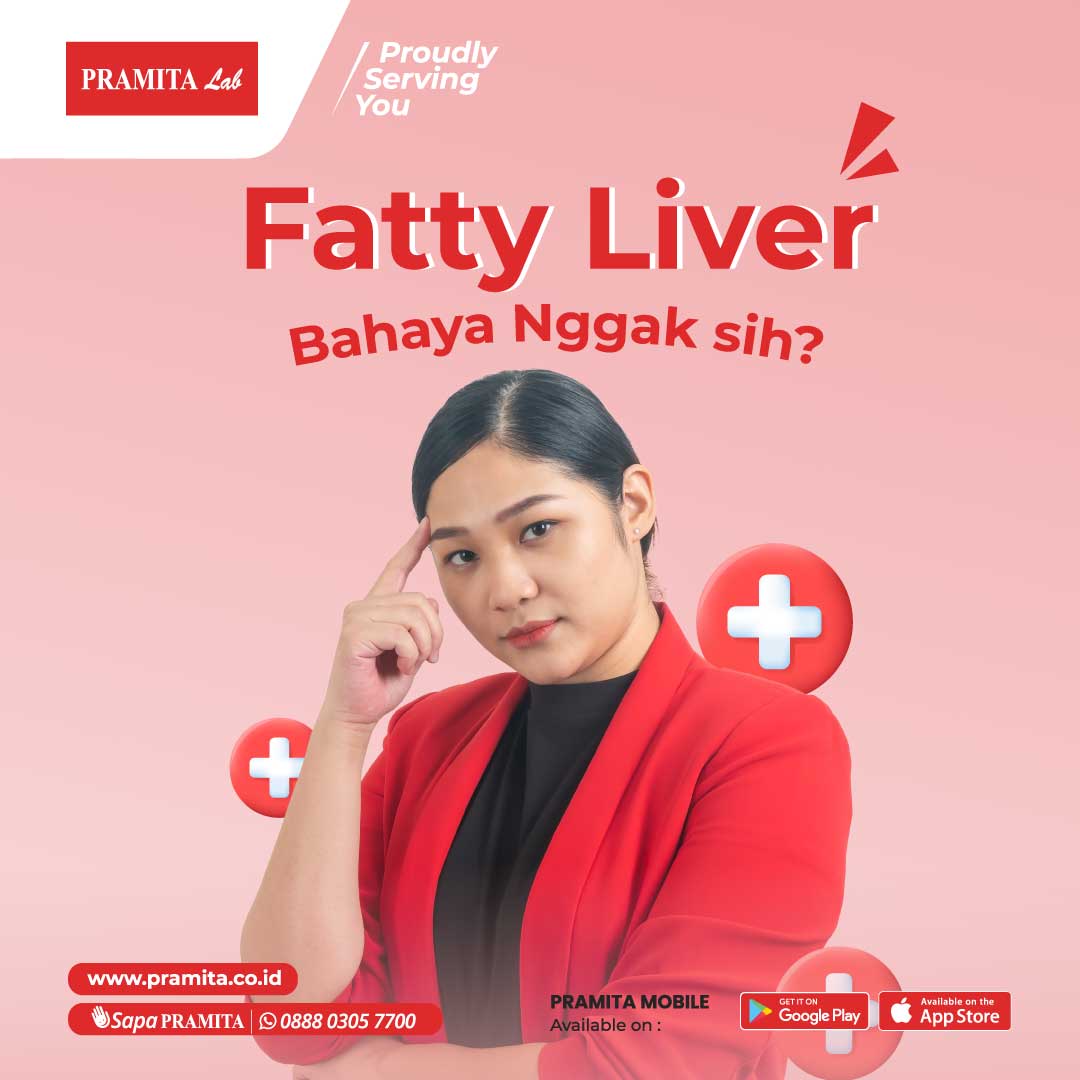Healthy Inspirations

Is Fatty Liver Dangerous?
Wed, 24 Jul 2024Fatty liver or fatty liver is a condition where the liver stores excessive fat. This health problem can be influenced by various factors, one of which is high cholesterol levels in the body. Please note, under normal conditions, the liver does contain fat. However, you should be wary of this condition when the fat levels in the liver are too high (fatty liver). So, what causes fatty liver and what are the symptoms?
Fatty liver (also known as Fatty Liver >> Fatty Liver Disease or Steatosis Hepatis) is a condition characterized by an increase in fat content in the liver (mainly in the form of triglycerides) which exceeds 5% of the total weight of the liver. This increase in fat levels can be proven by sonographic examination (Ultrasonography/USG) or liver tissue sampling (biopsy).
Based on the cause, Fatty liver is divided into 2 (two) types, namely: Non-Alcoholic Fatty Liver Disease (NAFLD) and Alcoholic Fatty Liver Disease (AFLD).
▪Non-Alcoholic Fatty Liver Disease (NAFLD)
NAFLD is fatty liver that is not related to alcohol consumption. It is not yet known for certain what causes this condition, but several things are known to increase the risk of NAFLD, including: high cholesterol levels, consuming foods with a high number of calories, lack of nutrition and nutrition, suffering from diabetes and obesity.
▪Alcoholic Fatty Liver Disease (AFLD)
AFLD is fatty liver caused by the habit of consuming excessive alcoholic drinks. The process of breaking down alcohol by the liver can produce substances that risk damaging liver cells and increasing inflammation. So, the more alcohol consumed, the higher the risk of liver damage. AFLD is the initial stage of alcohol-related liver disease. If not treated immediately, this condition can develop into alcoholic hepatitis and liver cirrhosis.
Several factors that can increase a person's risk of developing fatty liver include suffering from obesity and type 2 diabetes, metabolic disorders, high cholesterol, suffering from hypertension, hypothyroidism and hypopituitarism, suffering from insulin resistance, suffering from hepatitis C, taking certain medications such as corticosteroids.
Fatty liver is a disease that usually appears without any symptoms in the early stages. However, as the disease progresses, sufferers will usually feel several symptoms in the form of upper right abdominal pain, weight loss, swelling of the legs and stomach, feeling weak and tired, flatulence, loss of appetite, and jaundice which is characterized by a change in color of the skin. the skin turns yellow and the white eyeballs turn yellow.
To prevent fatty liver, none other than reducing consumption of refined carbohydrates and increasing intake of healthy fats, especially saturated fats from coconut, beef, nuts and seeds. Reducing fructose consumption is another step in maintaining a healthy diet to prevent fatty liver.
Increasing metabolism through regular exercise can also prevent fatty liver. Regular exercise can improve insulin resistance. Start with simple exercises such as walking for 30 minutes per day, then do a combination of cardio and weight lifting to produce maximum effect.
Eating foods that contain sulfur and super foods can be a natural way of detoxification. Some super foods that are good to consume are broccoli, cauliflower, kale, mustard greens, garlic and watercress.
Apart from the approaches above, basically there are a number of drugs that are not specific to fatty liver itself. This includes:
a. Antidiabetic and increases insulin sensitivity. Examples of drugs that can be used are Metformin 3x500 mg (can improve AST and ALT levels, increase insulin sensitivity, and reduce liver volume) and thiazolidinediones (pioglitazone) to improve insulin action in the body's fat tissue.
b. Anti-cholesterol drugs: in the form of gemfibrozil (triggers improvements in ALT and fat concentration, especially triglycerides, after 1 month of administration) and atorvastatin which can influence improvements in biochemical parameters and liver cell tissue, as well as the fat profile itself.
c. Antioxidants, including: vitamin E, vitamin C, beta carotene, N-acetylcysteine. Providing antioxidants can prevent the deterioration of fatty liver into cirrhosis, improve the inflammation that occurs and improve liver function.
d. Ursideoxycholic acid (UDCA), is a type of bile acid drug that can mediate body fat regulation and protect liver cell damage.
Reference:
Fatty Liver Disease. Cleveland Clinic medical professionals. 2020
Hasan I. Non-Alcoholic Fatty Liver. In: Setiati S, Alwi I, Sudoyo AW, Simadibrata M, S

